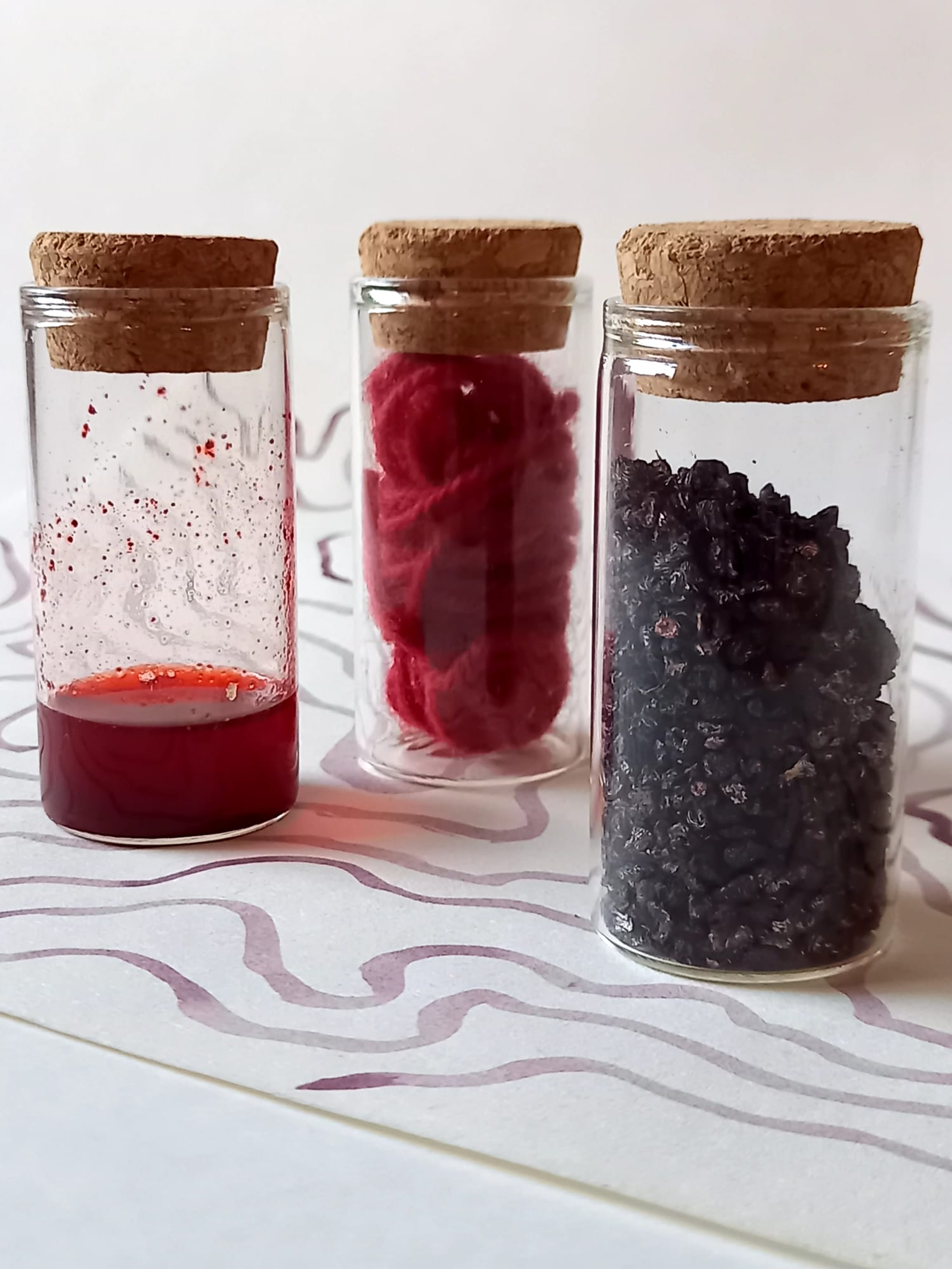Figure. 19. Glass bottles containing samples of cochineal powder + vinegar to use as a watercolor mixture, previously dyed yarn, and dried insects. Photographed by Cervantes 2023.
The ongoing Embroidered Stances project aims to revive the tradition of blanket embroidery in a contemporary context while investigating the sustainability of traditional materials, such as hand-dyed wool yarn. Another aim of this project is to reform the imagery of blanket embroidery so that personal and political themes can be expressed through patterns and designs. The third goal is to break down the conventional distinctions between art, craft, and design, and instead promote Arctic art that unifies process, production, expression, craft, and form, fostering a stronger sense of community, interconnectedness and transculturalism.
Expressions are activism; members of the Embroidered Stances project collective participate in societal debates through embroidery. This project allows the creators to have an opportunity to share ideas and experiences. Cervantes, as one member of the collective, has contributed her ideas, values and concepts. This project continues; each member will contribute with his or her content but have as a common ground the same objective: expressing personal and political views or stances through stitching. Embroidering is considered a dialogical practice and a space for sharing and debating social and political issues based on collective members’ diverse experiences.
Through this exposition, we invited readers to experience the processes of understanding the complexities of intertwined issues around using cochineal for dyeing and the history of the use of this insect. This exposition offers insights and possibilities for considering new materialistic relationships with species other than humans.
The embroidery pieces presented by the authors, emphasize the importance of promoting a new ecocentric perspective, recognizing that the planet is the only source of nourishment for all living organisms and natural ecosystems, regardless of their perceived importance or usefulness to humans.
Furthermore, this exposition aimed to draw attention to the continued oppression and discrimination faced by Indigenous communities and animals in various parts of the world. We underscored the importance of art that seek to implement decolonialist, posthuman, and anti-specist approaches in our present circumstances. We hope that this contibution will foster ongoing discussions on the ethical considerations surrounding the use of Indigenous knowledge and animals in the artistic realm. By acknowledging the sensitivity of insects and other species, challenging traditional and Indigenous knowledge, and promoting sustainability in multiple aspects, we can move towards a more conscientious and inclusive creative landscape. After all, we share the same planet and continue to be connected.

